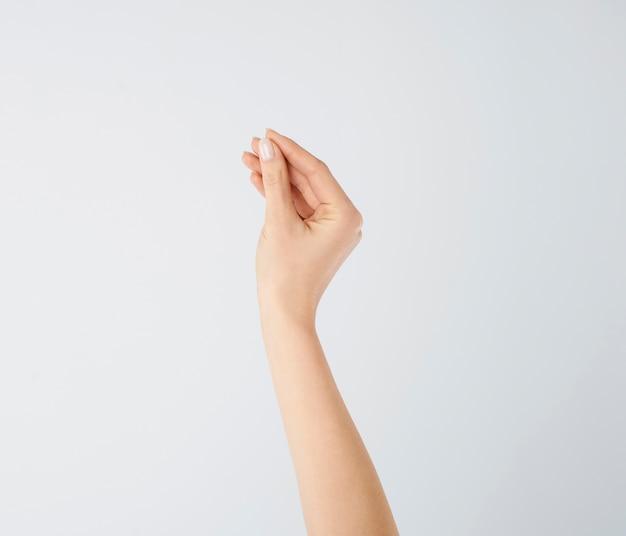When it comes to the well-being of our animal friends, proper care and management are paramount. In the realm of veterinary procedures, one tool that holds significant importance is the elastrator. Used in various scenarios, the elastrator helps with procedures like castration and tail docking in animals like goats. However, questions may arise about the tool’s purpose, usage, and potential discomfort. In this article, we will delve into the intricacies and shed light on the elastrator, exploring its veterinary applications, its differences from other tools like the Burdizzo and Emasculator, and whether it causes pain. So let’s jump right in and learn more about this essential device for animal care.
The Fascinating World of Elastrators
Imagine a device that sounds like it came straight out of a sci-fi movie. Meet the incredible elastrator! If you’ve never heard of it before, let me enlighten you. This quirky tool is used in veterinary and agricultural settings to apply elastic bands to animals for various purposes, such as castration, tail docking, and horn removal. Trust me, it’s not as brutal as it sounds. So, buckle up and let’s explore the fascinating world of elastrators!
What on Earth is an Elastrator
The elastrator might sound like a gadget from another dimension, but it’s actually quite simple. It consists of two main components: the elastrator bands and the applicator. The bands are small, stretchy rings made of, you guessed it, elastic material. Think of them as tiny rubber bracelets with a mission! These bands are carefully stretched onto the applicator, creating a loop.
How Does the Elastrator Work
Now that we’ve acquainted ourselves with the elastrator, let’s delve into the nitty-gritty of how it works. When the elastic band is loaded onto the applicator, it’s ready for action. The animal in question (sorry, no humans allowed here!) is securely restrained, ensuring everyone’s safety. Then, the practitioner places the loop around the body part targeted for modification. The elastrator is a true multitasker, commonly used for castrating lambs, calves, and even kidding goats. Who knew elastic bands could have such a diverse skill set?
The Elastic Magic Unleashed
Once the loop is in place, it’s time to witness the magic of elasticity. The elastrator band is positioned above the desired area, and then it’s released from the applicator. Don’t blink, or you might miss the mesmerizing moment when the elastic band contracts, creating a tight seal and cutting off blood circulation. It’s like the band is saying, “No more blood for you!”
The Gentle Touch of Rubber
You might be wondering, “Is it humane?” Well, fear not! The elastrator is designed to be a gentle alternative to traditional methods that may involve cutting or using other tools. By obstructing blood flow, the elastic band gradually causes the targeted body part to wither and fall off. It’s nature’s way of doing things, just with a little helping hand from the elastrator. Plus, the lack of open wounds reduces the risk of infection and promotes faster healing. How considerate!
The Not-So-Secret Benefits
Aside from its out-of-this-world name, the elastrator offers several practical advantages. First, it’s cost-effective. Elastic bands are cheap and readily available, making the elastrator a budget-friendly option. Second, it ensures minimal stress for animals compared to other methods. With no need for anesthesia or intense manipulation, the animals experience less pain and trauma. Finally, the elastrator allows for efficient handling of large numbers of animals. It’s like the superhero of the agricultural world, saving time and effort.
Well, there you have it, folks! The elastrator might have sounded like a bizarre contraption at first, but now you’re equipped with the knowledge to appreciate its purpose. Remember, this device has a vital role in various procedures that contribute to the health and well-being of animals. So, let’s tip our hats to the humble elastrator, the unsung hero of veterinary and agricultural practices. Now, brace yourself for more astonishing discoveries in the world of livestock and animal care!
Elastrator Tool: A Humorous Guide to a “Stretchy” Solution
The elastrator tool may sound like a fancy gadget designed by some mad scientist, but fear not! It’s actually a nifty contraption used in the world of animal husbandry. So, what in the world does an ‘elastrator’ actually do? Let’s dive into this rubbery realm and uncover the secrets of this peculiar tool.
The Rubber Band Wizardry
No, my friend, the elastrator tool is not something you’ll find in a circus. It’s a device used in veterinary medicine, particularly in the field of animal castration. With a simple yet effective design, this tool helps perform castrations, tail docking, and other procedures that require a tight grip, so to speak.
“Castrapreneurs” to the Rescue
Have you ever wondered who came up with such an odd-sounding contraption? Well, let me introduce you to the audacious minds of “castrapreneurs” – the individuals responsible for designing and manufacturing these rubber-band-wielding marvels. “Castrapreneur” may not be an officially recognized term, but it surely should be!
The Rubber Band Revolution
Now, let’s get into the nitty-gritty of how this elastrator tool works. Picture this: a tiny rubber band, stretching and expanding, ready to make its move. When applied to the targeted area, such as an animal’s scrotum during castration, it’s like a magician’s trick – quick and seamless! The elastic force of the rubber band gradually cuts off the blood supply, leading to the gentle detachment of unwanted parts. Ain’t that something?
The Elastrator Toolbox
No wizard is complete without the right tools in their arsenal – and the elastrator tool is no exception. The toolkit consists of a sturdy grip handle, a specialized applicator, and a supply of rubber rings. Remember, folks, it’s essential to have the right equipment for every job, no matter how peculiar!
Safety First, Always!
As bizarre and intriguing as it may seem, the elastrator tool must be handled with care. It’s crucial to ensure the animals are in a suitable condition for the procedures, and that proper hygienic measures are followed. Safety is paramount, folks! Let’s not forget that we’re dealing with delicate beings here.
A Gift That Keeps on Giving
Oh, the wonders of the elastrator tool extend beyond just castration and tail docking. It’s also utilized for other ingenious purposes! Lamb and calf tail docking, as well as the removal of dewclaws in puppies, are some of the additional applications where this stretchy savior comes into play. Talk about multi-tasking!
Stretch Your Curiosity
While the elastrator tool may have stretched your imagination, it’s a genuine device used in the world of animal husbandry. Now, my inquisitive friend, you’re one step closer to understanding the ins and outs of this “stretchy” solution. Time to let your newfound knowledge bounce and stretch its way into conversations, surprising others with your quirky expertise!
Elastrator for Goats
If you’re a goat owner, you may have heard about the elastrator. No, it’s not some fancy word for a goat fashion accessory or a new-age yoga pose. It’s actually a nifty tool used for banding goats, and trust me, it’s got nothing to do with music either. So, let’s dive right in and discover what this ingenious little contraption is all about!
What is an Elastrator
Alright, so picture this – you’ve got a bunch of rambunctious goats running around, and suddenly you realize that you need to castrate them. Yikes! But fear not, the elastrator is here to save the day! It’s a tool that consists of a band and an applicator. The band is made of a special rubber material that stretches and contracts, kind of like your waistband after a generous Thanksgiving dinner. The applicator, on the other hand, is what helps you perform the delicate task of putting that band in the right place.
How Does it Work
Now, let’s get down to the nitty-gritty of how this ingenious contraption actually gets the job done. When you’re ready to castrate your goat (because, well, that’s what we’re here for, right?), you gently place the rubber band around the ahem targeted area. And I’m not talking about choosing the next hit reality show (although that could make for interesting goat TV). The band cuts off the blood circulation to the testicles, resulting in them shriveling up and eventually falling off. Bye bye, Billy’s family jewels!
Benefits of Using an Elastrator
You might be wondering why on earth anyone would want to subject their poor goats to this procedure with such a peculiar-looking tool. Well, let me tell you, there are actually some pretty solid reasons for using an elastrator. For starters, it’s a pretty straightforward process that can be done relatively quickly. Plus, it’s a lot less invasive compared to other methods, like surgical castration. And let’s not forget about the cost-effectiveness – elastrators are affordable and reusable, so you won’t have to break the bank to acquire one.
Potential Risks and Considerations
Before you run out and get yourself an elastrator, it’s important to be aware of the potential risks and considerations involved. First and foremost, it’s essential to use the tool correctly to avoid causing unnecessary pain or injury to your goats. It’s also worth noting that the banding procedure should be performed when the goats are young, as older goats may experience more discomfort. Additionally, the elastrator should only be used by individuals who are experienced and knowledgeable in goat care. So, don’t try this at home unless you’ve done your homework!
So, there you have it – a comprehensive rundown on the elastrator for goats. Now you know that it’s not some mystical goat accessory or a new dance move. It’s a practical tool for castration that can save you time, money, and potentially a few awkward conversations with your neighbors. Just remember, if you decide to go the elastrator route, educate yourself, be mindful, and always prioritize the well-being of your goats. Happy banding!
Is Elastration Painful
If you’re curious about elastration, one burning question that might come to mind is whether the procedure is painful. You’ll be relieved to know that, thankfully, elastration isn’t as excruciating as one might imagine. Let’s dive into the details and naturally discuss the pain factor associated with this unusual practice.
The Lowdown on Pain Perception
Now, before we get into the nitty-gritty, let’s take a moment to explore how pain works. Pain is often a subjective experience, varying from person to person. We all have different thresholds when it comes to tolerating discomfort. Some individuals can handle a stubbed toe with a brave face, while others may scream bloody murder at the mere thought of a paper cut.
A Matter of Sensation
When it comes to elastration, the sensation ultimately depends on various factors. The use of high-quality elastrator bands, proper technique, and the skill of the person performing the procedure all contribute to the overall level of discomfort experienced.
A Slight Pinch
During elastration, the elastrator bands are placed around the scrotum or tail of livestock, cutting off blood circulation to the area. The initial application may elicit a slight pinch or stinging sensation, akin to catching your finger in a door but on a milder scale. It’s important to note that this sensation typically lasts for a short duration before subsiding.
A Welcome Analogy
To put things into perspective, imagine wearing a slightly too-tight pair of underwear. Initially, it may be mildly uncomfortable, but your body gradually adjusts, and the sensation becomes less noticeable over time. This is similar to what animals experience during elastration – a temporary discomfort that diminishes as the body adapts.
Pleased to Numb You
The fact that elastration doesn’t involve cutting or severing any nerve endings further contributes to its relatively painless nature. The procedure primarily restricts blood flow, which gradually leads to the atrophy and detachment of the targeted parts. While discomfort may be present during the initial stages, it quickly dissipates, allowing the animal to continue with their regular activities without ongoing discomfort.
A Matter of Professionalism
Lastly, it’s crucial to remember that the level of pain experienced by animals during elastration greatly depends on the skill and proficiency of the individuals performing the procedure. Just as you’d want a skilled barber to handle your haircut, it’s essential for elastration to be carried out by professionals who prioritize animal welfare and minimize potential distress.
So, while elastration may evoke visions of agony, the reality is far different. With a fleeting pinch and gradual adaptation, the discomfort associated with this method is relatively minor for animals. As long as the procedure is performed responsibly, the practice of elastration can ensure the overall well-being of animals in various contexts.
Elastrator for Veterinary Use
In the world of animal husbandry, elastrators play a crucial role in the care and management of livestock. These nifty devices may sound like a peculiar contraption from a sci-fi movie, but they serve a vital purpose in veterinary practice. With their ability to safely and humanely castrate male animals, elastrators have become a go-to tool for many farmers and veterinarians.
Ensuring the Comfort and Safety of Animals
When it comes to castration, it’s essential to prioritize the well-being of the animals involved. That’s where the elastrator comes into play. By utilizing a specialized band, this device effectively constricts the blood vessels and cuts off the blood supply to the targeted area. As a result, the animal experiences minimal pain and discomfort during and after the procedure.
The Humorous Side of Elastrators
Let’s be honest; the word “elastrator” just sounds a little funny, doesn’t it? The sheer whimsy of its name alone is enough to spark some chuckles. But don’t let the amusement distract you from the crucial role it plays in veterinary medicine. The elastrator may have a comical name, but it’s no joking matter when it comes to castrating animals safely and efficiently.
The Elastic Solution for Castration
The mechanism behind the elastrator’s effectiveness lies in its use of elastic bands. These bands are stretched around the scrotum, creating pressure that restricts blood flow. Over time, the blood vessels become constricted, leading to tissue necrosis and eventual separation. This process allows for the humane castration of male animals without the need for invasive surgery.
The Versatility of Elastrators
While commonly associated with castration, elastrators can also be used for other veterinary procedures. In addition to sterilization, elastrators are employed for tail docking in certain livestock species. By carefully applying the elastic bands, tails can be separated painlessly, minimizing distress and preventing future complications.
The Ease and Affordability of Elastrators
One of the primary advantages of elastrators is their ease of use and cost-effectiveness. Compared to surgical castration, which requires anesthesia and specialized equipment, elastration is a simple and straightforward procedure. Additionally, elastrators themselves are relatively inexpensive, making them accessible to a wide range of farmers and veterinarians.
In summary, the elastrator is an indispensable tool in veterinary practice, providing a humane and efficient solution for castration and other procedures. With the ability to safely and effectively restrict blood flow using elastic bands, elastrators ensure the comfort and well-being of animals. So, the next time you come across the term “elastrator,” remember its serious purpose, hidden behind its amusing name.
What is an Elastrator Used For
If you’ve ever heard of an elastrator, you might be wondering what on earth that strange-sounding contraption is used for. Well, my friend, prepare to have your curiosity satisfied! In this section, we’ll explore the fascinating world of the elastrator and delve into its various applications. So, sit back, relax, and let’s discover the incredible things an elastrator can do!
The Wonder of an Elastrator
The Basics
So, what exactly is an elastrator? Well, it’s a handy little device that has found its place in the realms of veterinary medicine and animal husbandry. This tool is primarily used to perform a common procedure called “elastration”. But don’t be fooled by the fancy name – it’s simply the act of applying tiny rubber bands to certain body parts of our four-legged friends.
Less is More
Now, you might be thinking, “What’s the point of putting rubber bands on animals?” Well, my friend, the answer lies in the magic of constriction. By strategically placing these elastic bands around specific body parts, we can cut off the blood supply, causing the tissue to die and ultimately fall off. It sounds brutal, I know, but fear not – it’s a relatively simple and painless process, especially when performed by skilled hands.
Where the Rubber Band Meets the Road
Now that you know the basic concept, let’s dive into some practical applications of the elastrator. One common use is for tail docking. This is a technique commonly performed on certain dog breeds to prevent future tail injuries or improve hygiene. By applying the elastrator rings to the tail base, the blood flow is halted, and the tail eventually withers away. Voila! No more pesky tail problems!
Baa-d to the Bone: Castration
Another common utilization of the elastrator is for castration. Yes, you heard me correctly – we’re talking about removing those family jewels from male animals. No need to cringe, my friend, as this procedure provides numerous benefits, such as reducing aggression, preventing unwanted breeding, and even improving meat quality in some cases. Thanks to the elastrator, it can be done quickly, efficiently, and with minimal fuss.
Tumors, Teats, and Trouble
But wait, there’s more! The elastrator proves its worth in dealing with various other situations. For example, it can be used to remove tumors by cutting off their blood supply, allowing the body to heal itself. Additionally, if a female animal has an injured teat, the elastrator can be used to create a controlled environment for healing. See, it’s not all about the “big snip”!
Wrapping it Up
So, there you have it – the elastrator, a tiny device with a big impact on animal welfare and husbandry. From tail docking to castration, tumor removal to teat healing, this little contraption does it all. While it may seem peculiar at first, the elastrator plays a vital role in ensuring the health and well-being of our animal companions. So, let’s raise a glass to the humble elastrator and its ability to perform miracles…one rubber band at a time!
What is the Difference Between Burdizzo and Emasculator
When it comes to the somewhat peculiar world of animal castration, you might come across two curious terms: Burdizzo and Emasculator. While they both serve the purpose of rendering male livestock, such as sheep, goats, and cattle, incapable of reproduction, they do so in different ways. To shed some light on this intriguing topic, let’s take a closer look at the differences between these two fascinating instruments.
The Mighty Burdizzo
The Burdizzo, often referred to as the “Bull Castrator,” is a tool that resembles a giant pair of pliers. Its menacing jaws may seem intimidating, but fear not, my friend! This device is specifically designed to crush the spermatic cords without piercing the skin. It’s like giving unwanted guests a VIP treatment straight to the exit door.
Some folks say that using the Burdizzo is like turning off a light switch. One second there’s electricity flowing to the bulb, and the next second—darkness! The same principle applies to the Burdizzo and the male animal’s reproductive abilities.
The Marvelous Emasculator
Now, let’s turn our attention to the suave Emasculator. This dashing fellow is a combination of three instruments in one: the crushing forceps, the scissor action blade, and the mighty hammer. Talk about multitasking! With the Emasculator in hand, you’ll have the power to clamp, cut, and crush. It’s the ultimate tool for the discerning farmer who enjoys variety in their castration techniques.
With its dual functionality, the Emasculator delivers a double whammy of emasculation (hence the name). First, it crushes the spermatic cords, just like the Burdizzo. But then, it gets fancy and slices through the cords with its sharp blade, making sure no sperm are left standing. It’s a bit like a “before and after” transformation, but for the animal’s nether regions.
The Difference in Technique
Now that we’ve gotten to know our contenders a bit better, let’s discuss the main difference between the Burdizzo and the Emasculator: the technique used. You see, the Burdizzo relies purely on its crushing power, while the Emasculator combines both crushing and cutting forces.
Think of it this way: the Burdizzo is like a gentle giant, employing brute strength alone to get the job done. On the other hand, the Emasculator is the James Bond of animal castration, complete with gadgets and style. It crushes, it cuts, it conquers!
A Matter of Preference
Before you rush to the nearest farm supply store with dreams of castration adventures, it’s important to note that the choice between the Burdizzo and the Emasculator ultimately comes down to personal preference.
Some farmers swear by the Burdizzo, praising its simplicity and effectiveness. Others prefer the versatility of the Emasculator, cherishing its ability to both crush and cut. Whichever tool you choose, make sure you’re comfortable with your decision and confident in your castration skills. After all, it’s a delicate procedure that requires skillful hands and a strong stomach.
In the world of animal castration, the Burdizzo and the Emasculator stand as mighty contenders, each with its own unique approach. The Burdizzo relies on crushing power alone, while the Emasculator takes it up a notch with its cutting capabilities. Whichever one you choose, remember to respect the animals and handle the tools with care. Happy castrating, my fellow farmers!



